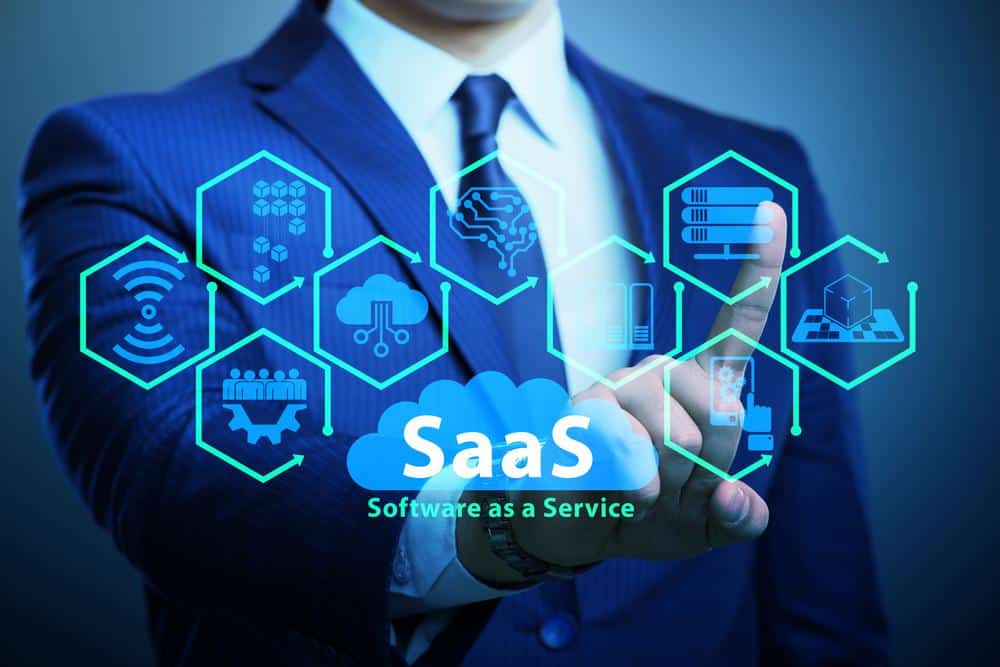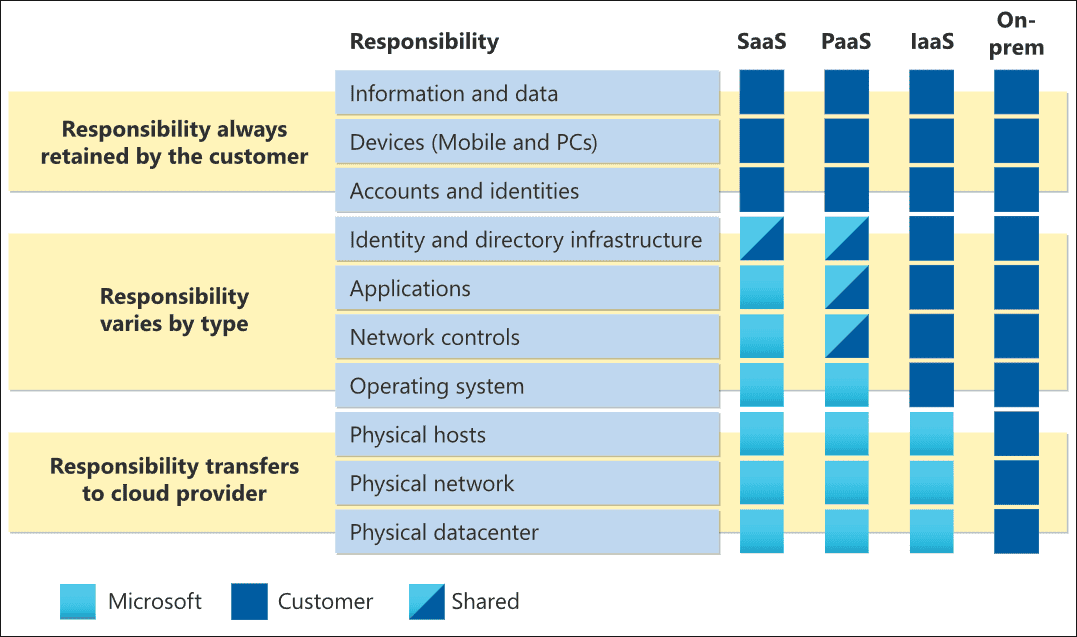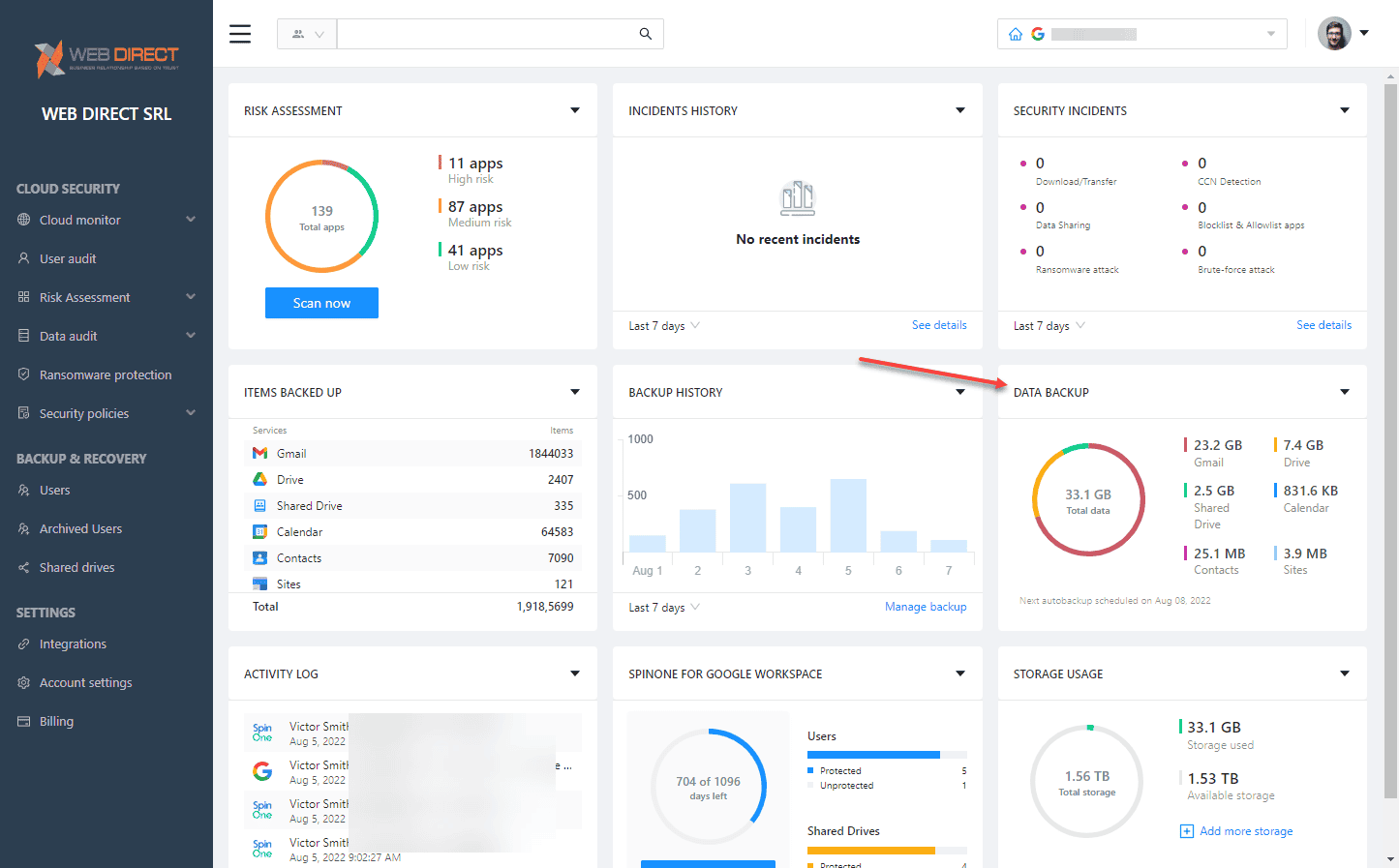Top 5 Reasons Why You Need SaaS Data Protection
Businesses are using the cloud more than ever. With organizations utilizing cloud environments, specifically cloud Software-as-a-Service (SaaS) solutions, hybrid cloud is becoming the new normal for enterprise operations. It also allows companies to embrace the hybrid workforce and empower users with the tools they need, regardless of location.
With more business-critical data now residing in the cloud, protecting critical data is becoming more important than ever. Doesn’t cloud SaaS environments in cloud hyper-scale data centers automatically protect your data? Why do you need cloud SaaS data protection? Let’s consider 5 reasons you need SaaS data protection.
An explosion of cloud SaaS data
Over the past two years, organizations have been undergoing a paradigm shift in how they empower their workforce and which tools and services they use for business productivity and communications. Cloud SaaS environments provide a “pay-as-you-go” pricing model, managed infrastructure, and built-in lifecycle management. As a result, organizations have shifted away from the mindset of corporate employees all located inside the corporate campus, connected to on-premises enterprise data center resources.
Instead, with our connected world and the availability of cloud SaaS services and solutions, many businesses are trading in applications and solutions hosted on-premises for robust cloud SaaS solutions. In addition to the rich feature set found in today’s cloud SaaS environments, both Google Workspace and Microsoft 365 provide access to third-party application marketplaces, allowing organizations to add and extend cloud SaaS functionality even further.

Arguably, you would be hard-pressed not to find a particular application or productivity tool in today’s cloud SaaS marketplaces. The cloud SaaS marketplace is a virtual buffet of applications that can be added à la carte depending on the functionality needed.
Despite the many advantages, features, and capabilities that come with cloud SaaS applications, enterprise backups are not one of them. Wait, how could your data in cloud SaaS environments be in any danger? Don’t cloud hyperscalers like Google and Microsoft have exponentially more infrastructure redundancy, security, and availability than you could ever build out in a private data center? The short answer is yes. Most enterprise organizations would be hard pressed to build out the data center infrastructure owned and maintained by the cloud service provider giants.
It may seem impossible to lose data in robust, state-of-the-art data centers maintained by Amazon, Google, and Microsoft. However, data loss in the cloud is not so different from why companies experience data loss in the enterprise data center. Let’s see how.
5 reasons why you need SaaS data protection
So, what are the data loss culprits that exist in modern cloud SaaS environments? Businesses need cloud SaaS data protection to protect their business-critical cloud environments for many reasons. These include the following:
- Shared responsibility model
- User actions and human error
- Ransomware
- Hardware failure or cloud outage
- Malicious third-party applications
1. Shared responsibility model
In the eyes of Amazon, Google, Microsoft, and other cloud providers, your data is YOUR responsibility. They are responsible for certain aspects of the environment, including:
- Physical servers and network infrastructure
- Physical data center security
- Patching and securing physical servers and the virtual infrastructure
- Upgrading the custom software running underneath the cloud SaaS environment
However, in the above list, as you note, there is no mention of backing up, securing, or protecting your data. It is because cloud service providers like Amazon, Google, and Microsoft operate in a shared responsibility model for hosting your data. It details they are responsible for certain things, and you as the customer are responsible for certain things.


You can read both Google and Microsoft’s shared responsibility model documentation here:
- Shared responsibility in the cloud – Microsoft Azure | Microsoft Docs
- Shared responsibilities and shared fate on Google Cloud | Architecture Framework
As a section of the defined responsibilities documented by Google in their SaaS environment, they detail the following:
- In SaaS, we own the bulk of the security responsibilities. You remain responsible for your access controls and the data that you choose to store in the application.
While cloud providers do provide certain built-in tools and capabilities, such as file versioning that allows reverting or recovering data, these are not meant to be enterprise-grade backup solutions. Instead, it means that you, as the customer, are ultimately responsible for any data loss to your business-critical data in the cloud.
Cloud SaaS customers must do their due diligence to protect their business-critical data and ensure they have enterprise backups of their data following data protection best practices, such as the 3-2-1 backup best practice methodology.
2. User actions and human error
Even in the cloud, data loss occurs due to user mistakes and human error. A user may mistakenly delete data they did not mean to delete. A malicious or unscrupulous user may intentionally delete data in the cloud. Either way, the results are similar. Data loss due to user actions and human error account for most data loss events, both on-premises and in the cloud.
A user may delete essential or sensitive data discovered to have no backup available. It is often more likely to see data protection oversights in the cloud as businesses are slowly overcoming many misconceptions about data loss in the cloud. Also, there may still be data protection gaps, especially with cloud environments of small to medium-sized businesses. It happens inter alia due to the lack of proper Google and Microsoft DLP practices and tools.
3. Ransomware
Ransomware is a growing plague for organizations. Ransomware groups are increasingly targeting critical data to have the most impact on business-critical operations possible. Additionally, as businesses continue to pivot to cloud SaaS, it is inevitable to see more ransomware attacks targeting cloud SaaS and other types of critical cloud data. Today’s ransomware is developing even more “teeth” as attackers use new methods of extorting as much money as possible, such as “double extortion” techniques. With double extortion, companies have to pay to get their data back AND to prevent the data from being intentionally leaked to the dark web.

Cloud ransomware attacks have already been seen with cloud email and cloud storage. Attackers can launch a cloud ransomware attack using malicious third-party applications. Using phishing attacks, hackers coax unsuspecting end-users into installing malicious third-party applications. After the ransomware has OAuth permissions in the environment, hackers can begin encrypting, deleting, or leaking business-critical data.
4. Hardware failure or cloud outage
It may be the least likely on the list of cloud data loss. However, hardware failures and cloud outages can lead to data loss. For example, back in 2019, a power outage in Amazon Web Services (AWS) data centers over the Labor Day weekend caused over 1 terabyte of customer data to be lost.
Again, while it is less common than some of the other data loss culprits on the list, cloud hardware failures and data center outages can and do result in data loss from time to time. Organizations must be prepared with their data protection to recover their data when needed due to these types of failures.
5. Malicious third-party applications
As mentioned earlier, attackers often use malicious apps masquerading as legitimate applications to entice users to install malware into the cloud SaaS environment. This type of attack can generally be delivered using a phishing email masquerading as a legitimate service.
Attackers prompt end users to grant OAuth permissions to the malicious app. OAuth is the authorization protocol of today’s cloud environments, allowing applications to function on behalf of the user without knowing the user’s password.
Once a malicious application has been granted access to the environment, it assumes all the permissions given by the user. OAuth tokens also bypass multi-factor authentication since they have an “application password,” allowing the application to interact with services and solutions without the MFA prompt.
Modern Data Protection for cloud SaaS environments
SpinOne is a comprehensive data protection and cybersecurity solution for today’s modern cloud SaaS environments, such as Google Workspace, Microsoft 365, and Salesforce. SpinOne data protection provides organizations with the tools and technologies needed to have a bulletproof SaaS data recovery strategy protecting their business-critical data. It also provides the backup capabilities required to satisfy today’s stringent compliance requirements.
Note the following features offered by SpinOne SaaS Backup & Recovery:
- Compliance – Unlike competitors, you can choose WHICH cloud and region you store your backup data. Admins can choose from multiple storage locations across the world to meet strict compliance and data governance requirements
- Security – SpinOne backups are protected with encryption, both at rest and in flight
- Automated backups – SpinOne backups are fully automated and can run 3x daily to snapshot mission-critical data, storing it in secure data targets in AWS, Google, or Azure.
- Guaranteed restore – You can recover a single file or an entire account. SpinOne maintains the folder structure and permissions, making a recovery a seamless operation to restore data to the way it was before deletion, encryption, or another disaster
- Flexible retention policies – You get to decide how long you keep backup data. Unlike being tied to the capabilities of built-in file versioning in cloud SaaS environments with limitations, organizations can define their own data retention strategies and policies, aligning with their business needs.
- Download files locally – If needed, you can download data contained in file backups to your local device
- Data migration – Not only can you recover data to the source account, but it can also migrate data from one account to another. This capability makes it easy to onboard and offboard employees without losing access to data
- Searchable backups – Admins can search the data contained in backups and easily find specific files, folders, or other resources within the hierarchy. This feature allows quickly pinpointing data for recovery, exporting, or migration.
- Activity reports – SpinOne provides activity reports detailing which data is protected and any data protection gaps

Cloud SaaS Backup FAQs
Isn’t your data the responsibility of the cloud service provider?
With the shared responsibility model, the cloud service provider is responsible for certain aspects of the environment, and you as the customer are responsible for certain aspects. Regarding the responsibility for customer data, this responsibility falls to the customer.
Are backup and recovery built into cloud SaaS environments?
Unfortunately, no. Most cloud SaaS vendors, including Google and Microsoft, do not have a built-in enterprise backup solution. They do have file versioning. However, file versioning is limited and often does not align with data retention policies, data governance, or the 3-2-1 backup best practice rule.
Can cloud data be lost or affected by ransomware?
Yes, it can, due to many reasons. Modern ransomware is increasingly targeting cloud SaaS data. As businesses migrate more data to the cloud, attackers will continue to pivot to cloud-based attacks. Other data loss results from end-user mistakes, hardware and cloud outages, malicious third-party applications, and other reasons.
Wrapping Up
Cloud SaaS environments are robust and powerful in the capabilities and features they offer to businesses today. They provide many benefits in terms of management, expense models, and lifecycle management that make them very attractive to enterprise organizations. However, protecting your data stored in cloud SaaS environments is the customer’s responsibility. SpinOne is a powerful solution that provides SaaS backup and recovery.
It adds enterprise backup features to your cloud SaaS environment to ensure your data is protected. In addition, it places the controls over backup data into the customer’s hands, allowing them to decide where and in which cloud their backup data is stored.
Learn more about SpinOne SaaS backup and recovery here: Enterprise ransomware protection and apps security solutions (spin.ai)
Was this helpful?
How Can You Maximize SaaS Security Benefits?
Let's get started with a live demo
Latest blog posts
Why Google Drive Backups Are Important
Google Drive offers customers a unique blend of robust security features to keep their data...
Evaluating the Best Backup Services: What to Look For and Popular O...
If you’re here right now you’ve probably realized how important it is to backup your...
Brewing Trouble: How a Starbucks Ransomware Attack Poured Cold Wate...
Cybercriminals often carry out attacks around holidays as this helps to ensure the most amount...


